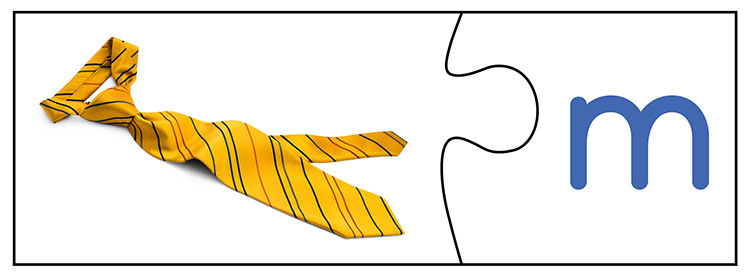H8: Build-a-Word Puzzles
1. Overview
Put together a two-piece jigsaw puzzle made of a root word and an ending sound. The assembled puzzle is a new word.
Say tie. Now add /mmm/ to the end. The new word is … time!
2. Materials & Preparation
- Script
- five pages of puzzles and an index — the index is for the adult’s reference only
3. Activity
Warm-Up: Quickly go through the consonant sound cards, in flash card fashion, to review the letter sounds. As you show each card, have the child give you the appropriate sound.Video: How to play Build-a-Word Puzzles
Take the puzzle pieces for two puzzles, mix them up, and spread them out in front of the child, with the letter sound pieces face-down and the pictures face-up. Name the pictures on the picture pieces, and have the child repeat the picture names.
To start the game, have the child turn over one of the face-down sound pieces and try to match it with a picture piece. Then he should touch under each piece as he says the picture name and the letter sound and then blend the two pieces together into a word, sweeping his right forefinger from left to right under the two puzzle pieces. (This helps teach children that we read words from left to right.)
Adult: Find the two parts of your puzzle and fit them together. Then say the two word parts of your puzzle. First say the name of the picture and then the sound of the letter. Child: Tie and /mmm/. Adult: Good. Now put them together like you put the puzzle together. Listen: tie • • /mmm/. Say it fast. What’s the word? Child: Time! Adult: Right!Then have the child put together the remaining two-piece puzzle. Once he does that successfully, put out two more puzzles for him to solve. Go through about ten different puzzles in one session of this activity. NOTE: The pieces are designed so that each one will fit with only one other piece from that page. (Although you could put tie and t together to make the word tight, those puzzle pieces will not fit together properly.) ↑ Top
4. Confidence Builder
Hand gestures often help the child better understand the activity. After the child has fitted the two matching pieces of the puzzle together, have him name the picture as he underlines it with his index finger, going left to right. Then, have him tap the last part of the puzzle with his index finger and give the sound for the letter. Repeat this two-step action several times. Have the child go faster each time until there is no pause between his giving the picture name and the ending letter sound. Put out just one puzzle (two pieces) at a time. ↑ Top5. Extension
Put out the pieces for three to four puzzles at one time. ↑ Top6. Small Groups (2-5 children)
Lesson Objective: Using two-piece jigsaw puzzles, children will connect a puzzle piece of a pictured root word with the appropriate consonant letter puzzle piece, orally blend the picture name and the consonant phoneme, and say the newly formed word. GELDS (Georgia Early Learning & Development Standards): CLL6.4f Georgia Standards of Excellence: ELAGSEKRF2.e Common Core State Standards: CCSS.ELA-LITERACY.RF.K.2.E Additional Materials:- optional: pinking shears or wavy-edge scissors (Cut apart the puzzle pieces with these special scissors for a more distinctive edge to match up.)
Leave a Reply
